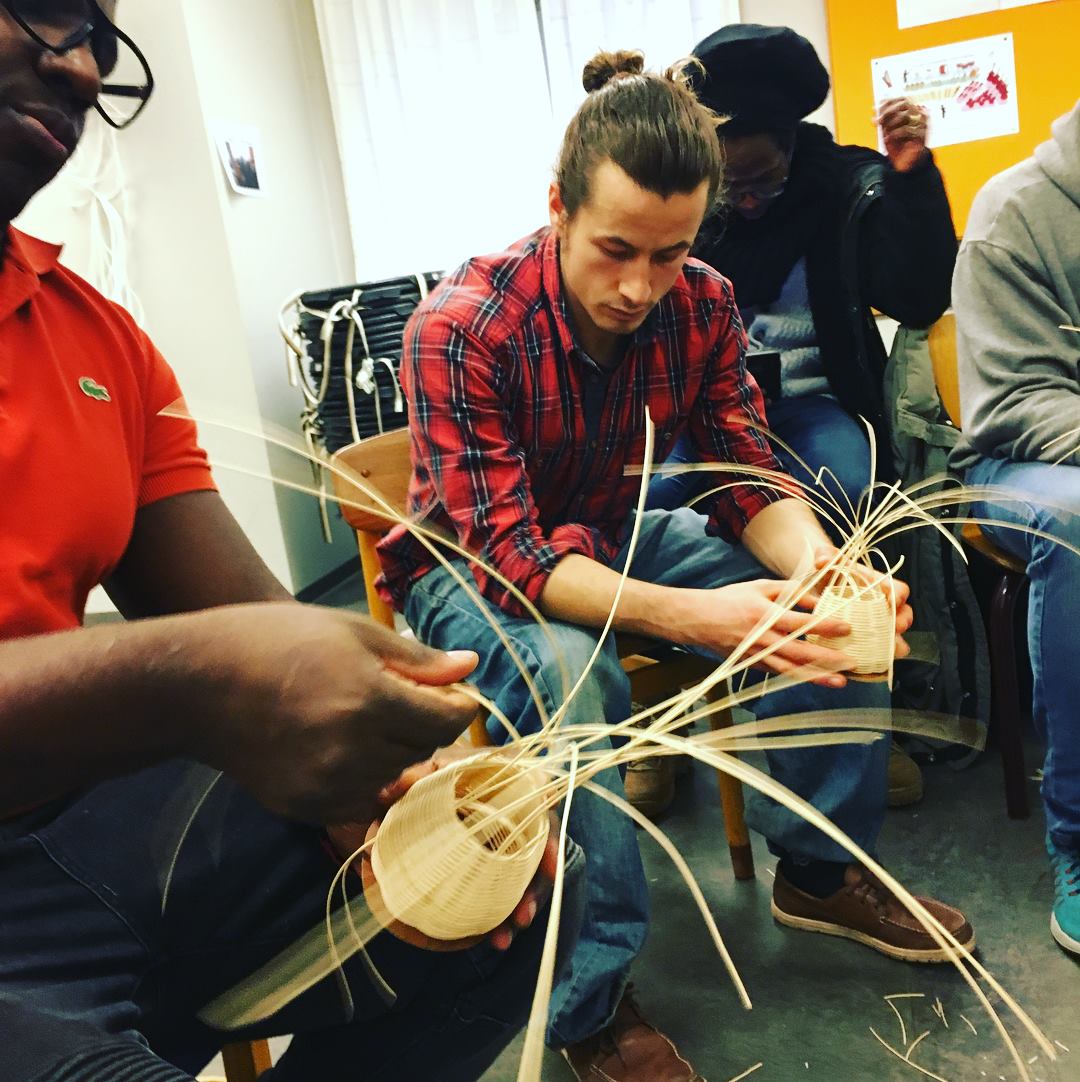Musikken overleverer historien om capoeira
I capoeira musikken overleveres årtiers historier fra Brasilien, om nogle af de største og mest kendte Capoeira Mestre, såsom Mestre Pastinha og Mestre Bimba. Derudover findes adskillige andre markante figurer, der hver især har præget og stadig præger capoeira vi ser idag. I musikken fortælles om slavernes kampe for frihed, om lidelser, sejre og om kærlighed, om mystikske sagnsopsprungne figurer. Og ikke mindst om fantastiske capoeira spil og kampe udlevet i roda’en, capoeiraens centrum i spillet.
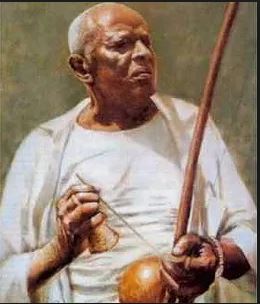
Mestre Bimba – Manoel dos Reis Machado (1899 – 1974)
“Musikken og sangene er som en puls, en livsnerve, der understøtter, dirigerer og beretter om capoeira spillets gang i rodaen eller sætter stemningen for det spil, vi gerne vil se”.
1.0. Berimbau
The berimbau is a Brazilian musical bow, made of wood, that is used primarily to accompany the capoeira game in the roda. Most of the berimbau instruments are just under 1.5 metres (5 feet) long, and they are strung with a single metal wire, called an arame. The arame is typically drawn from an old truck or automobile tire. The Cabaca, a dried, hollowed, open-backed gourd resonator is attached to the instrument near its lower end; the resonator is held in place by a loop of string that passes through the top of the gourd and around both the wood and the wire of the bow.
When the berimbau is played, it is held in an upright position—usually in the left hand—with the open back of the gourd against the stomach. The little finger of the supporting hand is slipped under the string that secures the gourd to the bow, while the ring and middle fingers are wrapped around the wooden pole just above the gourd. The index finger and thumb manipulate the dobrão, a thick metal disc or smooth stone that is pressed against the wire to generate different sounds during performance. Held in the other hand are a thin stick, roughly 12 inches (30 cm) long, called a baqueta, and a small rattle, called a caxixí.
Using the baqueta to strike the wire of the berimbau and the dobrão and cabaça to control the instrument’s pitch, timbre, andresonance. The berimbau player generates an array of discrete rhythms known as toques. These toques are built from a combination of three fundamental sounds: a low pitch produced by the open wire; a higher pitch produced by stopping the wire firmly with the dobrão; and a nonpitched buzz, generated by allowing the dobrão to rest lightly against the wire when it is struck. Resonance and timbre are controlled by strategically pulling the gourd toward and away from the stomach. Meanwhile, the rattle underscores the strong beats of each rhythmic pattern.
The rhythms of the berimbau
Some berimbau rhythms are characteristic of a particular capoeira school or master, while others may be typical of a certain region. Many of the toques are named after Roman Catholic saints or African spiritual societies (such as Nagô). One well-known rhythm called “Cavalaría,” however, is a reference to the mounted police; historically, it was used to advise capoeiristas(practitioners of capoeira) of the approach of the authorities. Indeed, the different toques, which are readily recognized by seasoned capoeiristas, call for different qualities of movement and interaction between opponents.
When performed in capoeira, the berimbau typically leads an ensemble consisting of one or two secondary berimbaus, a pandeiro (tambourine), and an atabaque (drum); somewhat less frequently, a reco-reco (notched scraper) and an agogô(double-bell) are added to the mix. The ensemble also accompanies call-and-response singing between a soloist (typically the lead berimbau player) and a chorus (the other musicians and the capoeiristas). If the ensemble contains more than one berimbau, each instrument normally assumes a different musical role in the ensemble. The largest and lowest-pitched berimbau—the gunga—outlines the basic rhythm. The middle instrument—the berimbau de centro or berimbau médio—carries the main rhythm, with moderate variations. The highest-pitched berimbau—the berimbau viola—performs more elaborate variations.
The first records of the berimbau dates back to the early 19th century. Although it is undeniable that the instrument was introduced by the African slave population, it is uncertain from which group the berimbau ultimately derives. Musical bows of nearly identical construction have been documented in South Africa, Mozambique, and Angola, and instruments of similar design have been found in other sub-Saharan countries, particularly in West Africa. Indeed, it is unlikely that the berimbau is traceable to any one African society; rather, it probably emerged in a unique Brazilian form from a combination of African traditions. Moreover, the berimbau evidently was not initially associated with capoeira but was added later to disguise the martial art as a dance.
2.0. Atabaque
The shell is made traditionally of Jacaranda wood from Brazil. The head of the atabaque is traditionally made from calfskin. A system of ropes are intertwined around the body, connecting a metal ring near the base to the head. Because of this tuning mechanism the drum is sometimes known as ‘Atabaque de Corda’. Wooden wedges are jammed between this ring and the body and a hammer is used to tighten or loosen the ropes, raising or lowering the pitch of the drum.
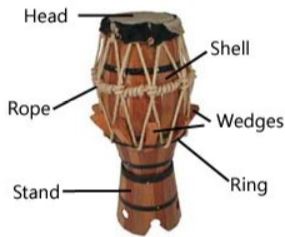
In Africa, cord-and-peg tension atabaques had a distribution area roughly congruent with the iron double bell (Agogo). This included the Guinea Coast from the Niger River and west to Benin, Togo, and Ghana. Beyond West Africa, cord-and-peg tension drums appeared in Bahia, Suriname, St. Domingue, Cuba, and the southern states of America. These drums traveled with the Ewe, Fon, Akan, and Yoruba people during the New World diaspora.
The atabaque is used in Capoeira, Maculelê and the Afro-Brazilian religions of Candomblé and Umbanda. It is considered sacred in Candomblé and Umbanda. The main instrument in Candomblé is the drum (Atabaque), skinned with cord-and-peg tension.
There are three types of atabaque: rum, the tallest with the lowest pitch; rum-pi, of medium height and in the middle pitch range; and lê, the smallest and highest-pitched.
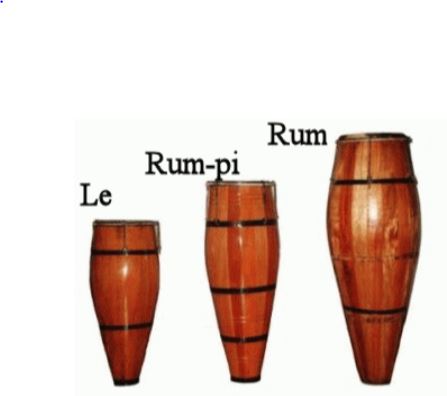
In Maculelê and the rituals of Candomblé and Umbanda, as many as three Atabaques are used (usually one of each type), but in Capoeira, traditionally only one is used.
2.1. Toques de atabaque
Pandeiro
Caxixi
The caxixi is a basket rattle, originating from the Bantu culture, which belongs to the African region of Congo-Angola, in which it was used in rituals and ceremonials. The instrument arrived in Brazil, brought by slaves and today Caxixi is a percussion instrument used mainly as a complement to the berimbau.
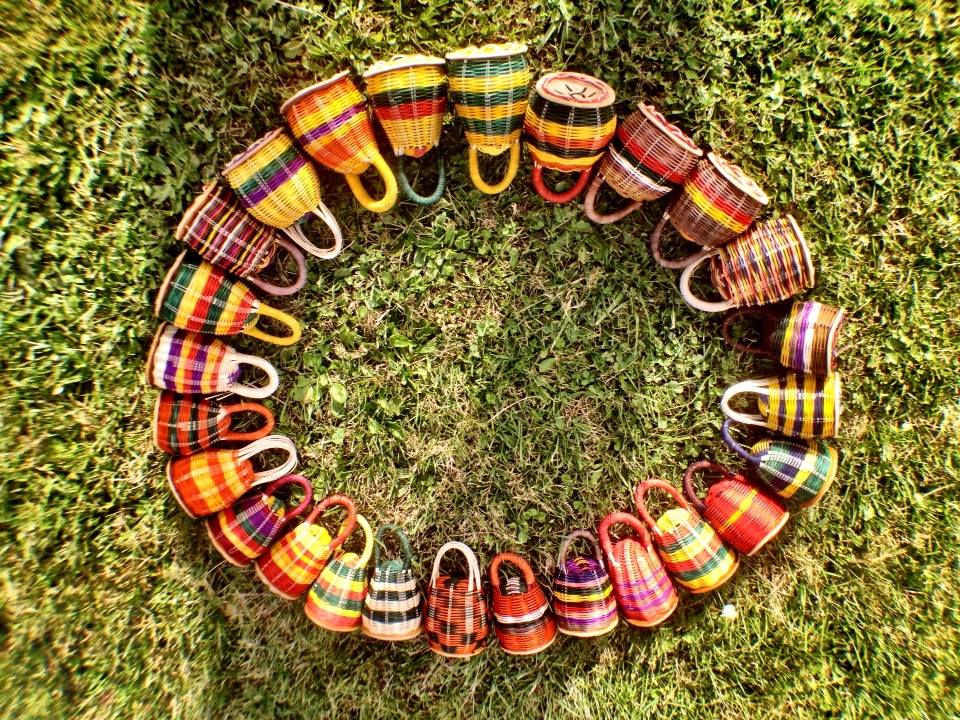
Caxixi in the Making

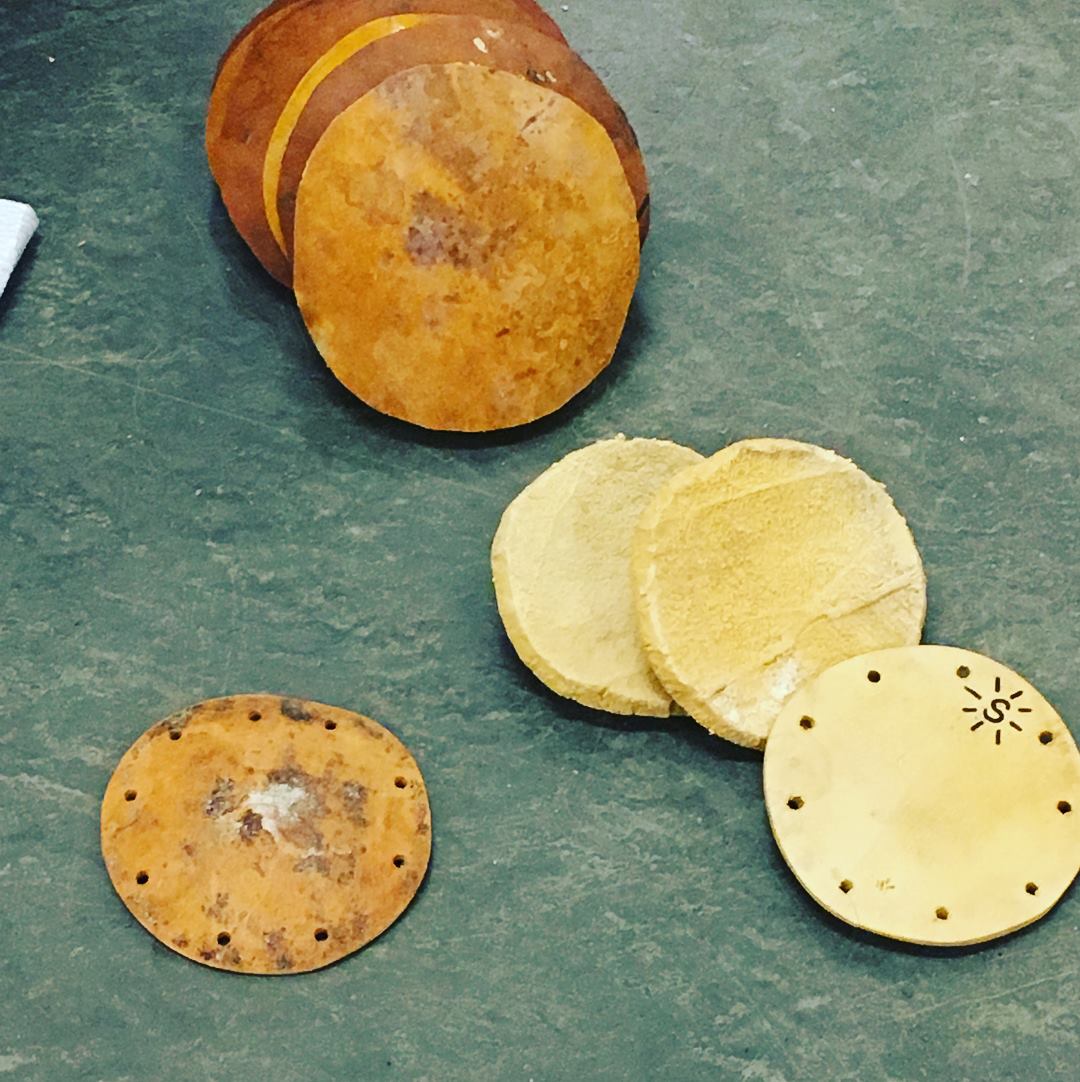
Agogo
Agogo anvendes i capoeira musikken, som en afgørende rytmeangivende puls sammen med atabauqen. Det er et musikinstrument først udviklet i Afrika, og muliggjort af bantustammerne efter deres migration til Vestafrika. Agogo anvendes i den nigerianske Yoruba musik, men dens oprindelse viser også denne dobbelte boble, eller nogle gange en enkelt lavet af bronze, havde et praktisk formål. I capoeira musikkens Bateria indgår oftest en agogo.
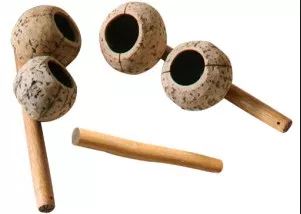
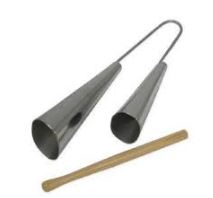
Reco -reco




